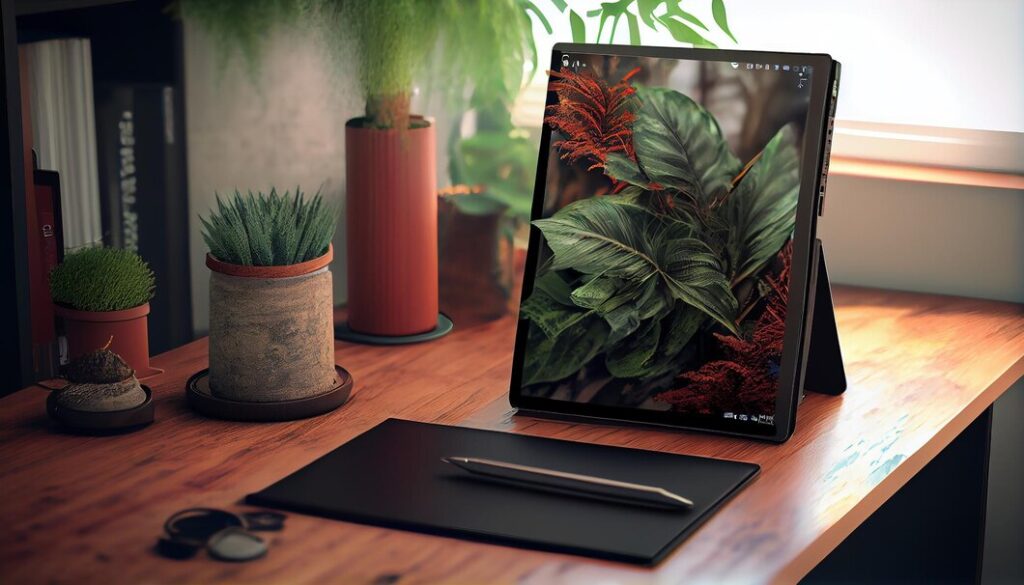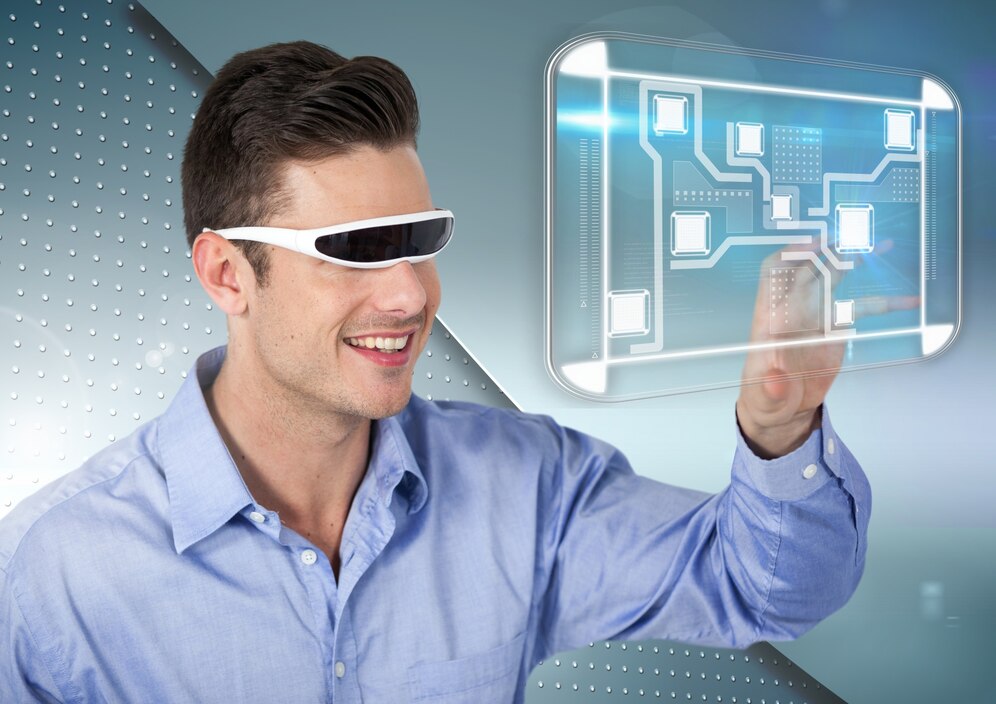Future of Laptop Design: What to Expect for the Next Five Years
Today, although technology is a very fast-changing world, laptops still play the biggest role in personal and professional life. It was over time that laptops became interesting devices from being productivity tools. Artificial intelligence advancements, processing powers, and materials allow the future of laptop design to be much brighter and far more innovative than anyone might have even imagined. Some trends set to shape the next five years for the future of laptop design include:.
So, let’s dive into the most exciting trends and innovation in laptop design that we are going to witness in the very near future. From foldable screens to AI integration, here’s what the future of laptops may be like.
1. Foldable and Flexible Displays
Other interesting trends in laptop design come in the form of foldable and flexible displays. Foldable technology has been on the rise for almost two years in the smartphone world, but it now promises to also change laptops.
Foldable Laptops:
Laptops with foldable screens, like the Lenovo ThinkPad X1 Fold, are already here, but five years from now, they’ll be more refined and widespread. The laptops have screens that bend across the middle, giving you an even more portable form factor but one that still provides a large display when completely opened. Just imagine your 13-inch laptop folding into a compact device that can easily fit into a purse or backpack for easier transport.
Foldable laptops will make a hinge obsolete because with them, there is no break at all in transitioning from laptop to tablet, or even to tent mode. From this perspective, foldable laptops are designed for people who want something that is both part work and partly play with the kind of flexibility that provides portability and real estate on the screen. Flexible OLED Displays:
Foldable designs are the most apparent combinations in flexible OLED displays. Being organic, the display bends and flexes without breaking. That opens up more innovative compact designs of laptops that remain thinner and lighter with curved screens or wrap around the edges.
2. Expect AI and Machine Learning Integration to progress

Whereas, artificial intelligence and machine learning are now reshaping the notebook of today and tomorrow. Artificial intelligence might further enhance the user experience, enhance the performance, and optimize energy consumption.
Optimization in Performance Through AI
Laptops, in the near future, will really evolve into more sophisticated AI-driven systems that are changeable based on your activity. That is why AI can adjust processing power, battery life, and even cooling systems depending on whether you’ll run processor-intensive applications like video editing software or just doing web browsing. It is through such intelligent resource distribution that AI will make laptops run much more efficiently, providing an extended battery life.
Personalized User Experience:
For example, AI will also play a greater role in personal computing. For instance, a laptop will learn you’re a morning person, and it will adjust screen brightness and keyboard lighting appropriately and, of course, the layout of applications related to your workflow. One could imagine that a future-seeing laptop would preload certain applications at certain times of the day or offer to optimize tasks with brilliant suggestions.
That which would come in with the involvement of AI security will be the much better biometric authentication, such as facial recognition, fingerprint scanning, all to be standard features on devices and systems.
AI-driven facial recognition may therefore be an application for logging onto a system, say by recognizing subtly different facial contours that may have adapted to changes in appearance, say for instance because one has grown a beard or put glasses on.
3. Thin and Ultra-light designs
Parts such as processors and batteries, which are made even smaller and more efficient, are what will allow thinner and lighter laptop computers. MacBook Air and the Dell XPS series set the new standards; next generations take portability even further.
One of the most highly debated design changes would be the eventual disappearing of legacy ports such as USB-A and HDMI and is replaced instead by USB-C connectivity with wireless. The MacBook line from Apple has already taken this route, and it will be interesting to see how others follow along. This would not necessarily make laptops less cumbersome in design but perhaps more expensive for users to buy a variety of adapters and dongles.
Fanless Laptops:
Even cooling fans might find their way out of future laptops. And when pushed further, new cooling technologies, and if energy efficiency can be implemented through processors, the heat that lags behind in such systems would become less of an issue, admitting to thinner, quieter laptops with fewer moving parts and thus fewer chances for hardware failure.
The laptops could also feature passive cooling systems, in keeping with advancements in graphene and other frontier materials. This further adds portability.
4. Long-endurance Batteries through solid-state battery technology
Of course, the life of a battery forms one of the most vital attractions buyers consider when purchasing a laptop, and whilst lithium-ion batteries abound presently, there is a very long way to go yet. Five years from now, we will still be seeing a lot of improvement in battery life, thanks to the developments in this area about which we shall hear more shortly: solid-state batteries.
Solid-State Batteries
Unlike traditional Li-ion, such batteries will utilize a solid electrolyte rather than a liquid one and consequently will be safer, more efficient, and with greater energy density. This may mean that one day we will see laptops boasting batteries that run for tens of days rather than hours or tens of hours on a single charge.
They would charge faster and degrade slower. For example, they can enable a laptop to last longer in terms of its capacity, and the number of replacements because of degradation would not be significant.
Wireless Charging
So as this wireless charging technology continues to go, so may future laptops offer built-in wireless charging features. It would simply allow users to charge devices by merely positioning the devices on a charging pad or desk containing all the features of wireless charging. A world in which you would never have to plug your laptop anymore because you just simply put it on your desk.
5. Environmentally Friendly Materials Green Materials
Given the urgency of the sustainability issue which seems to cut across a wide range of sectors, laptop manufacturers today are in search of means and ways to create and work with eco-friendly materials as well as processes of manufacturing. Expect laptops not just to be created from recycled material but also from biodegradable material where these would minimize impacts of technology in terms of ecology.
Green Material
Laptops are still one of the ones given to landfills due to generation, as biodegradable material is rarely used when making them. Some manufacturers have already started developing biodegradable materials for certain components of a laptop, such as the case, bezels, or even the packaging. Dell and HP are also turning to recycling plastics and metals in the production of their laptops, and this trend is going to be on the rise soon.
Modular Designs:
In any case, future laptops can also be more modular than the available kinds. To put it briefly, this will mean that the users can change the battery, replace the RAM and the storage, then just simply upgrade the different parts of the laptop with relative ease. Modular designs do not only prolong the laptop’s life but also reduce electronic waste because they are more sustainable for lovers of tech.
6. Interface with AR and MR

Future interaction between a human being and a laptop will heavily rely on augmented reality and mixed reality. The future laptops may integrate AR and MR headsets and glasses into these technologies and, therefore, make experiences seamless.
AR-enabled workflows:
One would only have to be able to imagine using a computer through which, one could see and even interact with 3D models overlaid onto the real world. Such technology would indeed seem to be very useful for professionals in fields of design, engineering as well as healthcare. Therefore, users may work together on actual projects within the same augmented space in real-time by manipulating virtual objects and data within it.
Virtual Displays:
Further on the horizon are laptops with virtual display technology; one can stretch screen real estate without additional monitors, for instance, wear glasses that present augmented reality, but use at arm’s length several floating screens in your work space and reap all the benefits of a multi-monitor setup without the bulk.
7. 5G connectivity that ensures seamless mobile productivity
Soon, many markets will be flooded with future laptops that have built-in 5G connectivity. This means not only super-fast data download speeds and low latency but also a real difference for content creators, remote employees, and business users who connect and work from anywhere in the world.
5G and Cloud Computing:
5G technology will alter the game for laptops on basis of cloud computing. The faster data transfer rate with high reliability, with fewer chances of disconnections, app services open in minimum delays. This will ensure more seamless collaborations, real-time editings, and faster independently backed up on local storage.
8. Better security features
Future computers will begin to offer security since the cyber-attack threats are getting too robust. It will include AI-based biometric authentication, along with hardware-based encryption and boot processes. Data leaks will also be prevented with privacy screens.
Hardware Security Modules (HSMs):
Future laptops will have a feature of HSM. Here, protection will be layered for encryption keys and other sensitive information. Modules can make even the access of attackers extremely tough once they have acquired physical access to the device.
Conclusion
From foldable screens to AI-infused performance, tomorrow’s laptop promises much excitement. Over the next five years, significant battery life and eco-friendliness will be the watchword, morphing into a shape-shifting new era of notebooks because the future of laptop design is most certainly not one-size-fits-all. With increasingly high levels of integration and ongoing technological developments, notebooks can grow to become a more sophisticated, powerful, sustainable blend of portability and performance-a very effective feat.
Conclusion
From here on, this promise of the future is sure to promise these laptops not only to be satisfied with the usage meant by the consumers at present, but also to feel and cope up with the tide of rising technology. Be it a professional creative or even a business executive or for that matter casual users, laptops in near future will have something for all.


